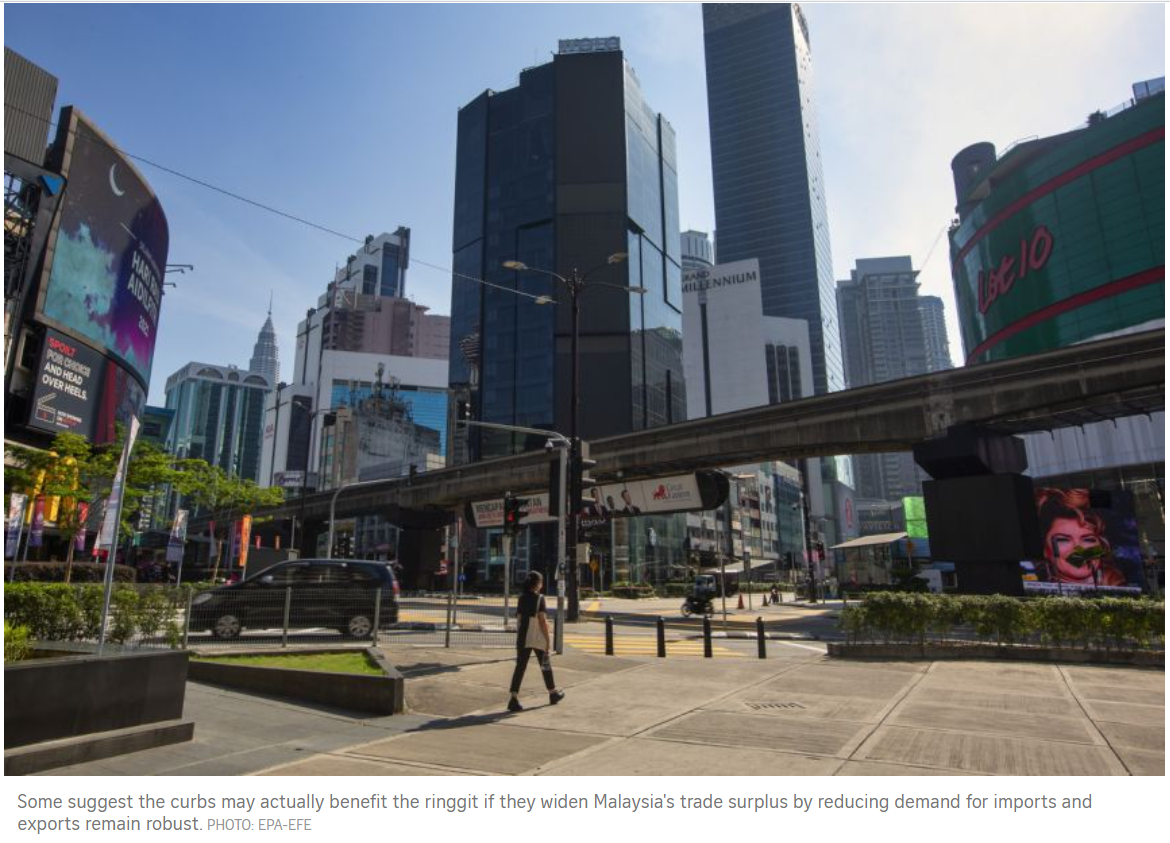Ringgit shrugs off Malaysia’s Covid-19 lockdown in sign worst of losses may be over
KUALA LUMPUR (BLOOMBERG) – The ringgit has greeted the start of Malaysia’s two-week national lockdown with a show of stability, suggesting any adverse impact from the restrictions may be limited.
The currency was Asia’s worst-performer in May, falling almost 1 per cent against the US dollar as the nation’s Covid-19 cases rose to a record. However, it never breached the March low of just under 4.16 per dollar and steadied last week around 4.13 despite the start of the lockdown.
Part of the reason is the impact of the recent tightening of restrictions on economic growth is estimated at less than 1 per cent, according to the finance ministry. This is premised on a strategy that targets physical contact-heavy sectors while allowing those that contribute to more than 90 per cent of gross domestic product (GDP) to operate.
In fact, some suggest the curbs may actually benefit the currency if they widen Malaysia’s trade surplus by reducing demand for imports and exports remain robust. The latter surged 63 per cent in April on an annual basis.
“The lockdown could strengthen the ringgit due to domestic demand compression – as we have seen previously in the case of the Philippine peso or Indian rupee,” said Trang Thuy Le, Asia FX strategist at Macquarie Capital in Hong Kong. The rupee was Asia’s best-performing currency last month despite Covid-19 continuing to ravage India.
The bigger near-term risk for the ringgit may be if the government’s US$9.7 billion (S$12.8 billion) aid package spurs foreign investors to sell Malaysian bonds over fiscal deficit fears.
But even here the impact of the stimulus may be limited. Economists at MIDF projected Malaysia’s fiscal deficit to be 6.1 per cent of GDP, versus the official government forecast of 6 per cent, after taking the package into account.
“Fixed income outflows could rise in the near term on concern of fiscal deterioration, but we think this should be more than offset by weaker imports during lockdown,” says Ms Le, who sees the ringgit ending this month around 4.12 per dollar.
Rising crude prices could also help support the ringgit given the country’s status as a net oil exporter. West Texas Intermediate touched its highest since October 2018 last week.
Source: https://www.straitstimes.com/business/economy/ringgit-shrugs-off-malaysias-covid-19-lockdown-in-sign-worst-of-losses-may-be-over


 Thailand
Thailand




